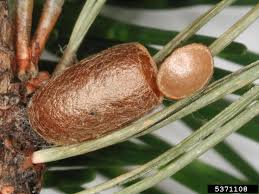PaBIA,
There are two items in this eBlast: one, a follow up by Shelagh Grant, PaBIA’s Forest and Wildlife Chair and our ‘expert’ on the Pine Sawfly: and a second from the GBA requesting our response today if possible and by Oct 16th at the very latest regarding the Ontario Provincial Proposal to settle claims with the Wiki Native Nations by giving up Crown Land to our north.
|
Your Action Now is Being Requested by the GBA Regarding the Proposed Settlement with the Wiikwemkoong First Native Nation
Are you familiar with the issue that the GBA has been following regarding a proposed settlement of Canadian Crown land to the Wiikwemkoong First Native nation?
Essentially, one of the prime paddling destinations between Killarney and the French River is being threatened by a proposed land settlement by the Ontario Government to the Wiikwemkoong First Nation. Philip Edward Island, and most of the smaller islands surrounding it, are being offered by the Ontario Government to the Wiikwemkoong First Nation, as part of a land claim settlement. These lands were never claimed by the Wiikwemkoong, but the Ontario Government is proposing to give them away rather than deal with the lands that actually were claimed. This settlement, if it proceeds, would make virtually the entire Georgian Bay coast between Killarney Provincial Park and French River Provincial Park inaccessible and off limits.
PaBIA is not taking an official position on this as an Association. However, the GBA, on behalf of all its member associations up and down the Georgian Bay coastline, is asking all of the members of the various organizations to individually EMAIL a letter TODAY expressing your position on this proposal, which we do support. From John McMullen, President of GBA:
URGENT – Action required by October 16th
Further to my previous correspondence on the Wiikwemkong (Wiky) Land Settlement, I would like your help in getting GBA members to send letters/emails to the Ontario government expressing their/our interest and concerns over the proposed settlement. We have drafted the attached sample letter for people to consider using. As you will see, we are not only focussing on the immediate proposal in the Killarney area but also the larger Wiky Land Claim on all islands from Penetang to Sault Ste Marie and the potential for this settlement to trigger other claims by other First Nations.
The formal public consultation window is open until October 16th. As in all government consultations, number of responses is key. If the government does not hear from many members of the public they will assume that their proposal is acceptable. So please get the word out to your members and encourage them to send in letters immediately.
Further background information can be found on our web site
. PaBIA encourages EACH member to write a letter and send it off today. A sample letter is attached for your use should you choose to email it.
|
|
Pine Sawfly Infestation Update
|
 |
| Mature Introduced Pine Sawfly Larvae — credit Steven Katovich, USDA Forest Service |
As of September 22:
PaBIA thanks all those who took the time to report on the status of introduced pine sawfly infestation on their properties. We are surprised at the widespread nature of this outbreak and will use the replies to create a map that will identify the perimeter of the outbreak in our area as well as “hot spots.” So far there have been roughly 90 replies, many reporting severe infestation, some with defoliation. Some remarked in the
 |
| PaB Defoliated Tree – Fall 2015 |
increased incidence of the pine shoot beetle, which also attacks
trees stressed by drought. So far, the larvae seem to avoid the red pines, which nonetheless are susceptible to a variety of pine shoot and pine cone beetles. Shelagh Grant has been unable to reply individually but wishes to thank everyone who responded. Their assistance will be invaluable when planning a tour of the area next Monday or Tuesday (depending on weather.)
 |
| Introduced Pine Sawfly Cocoon — G. Csoka, Hungary Forest Research Institute |
pupate.
If visiting your cottage this fall, you might try to gather and destroy any brown pupae cases found on the ground or lower branches, as these will winter over and produce the adult sawfly which will fly to healthy pine branches in the Spring and lay up to 70 eggs in slits along the
 |
| Sawfly Eggs in Needles |
needles
‘ edges to produce a new generation of larvae. At present, the larvae in the pines, especially the tall ones tend to be far too widely scattered in the trees for any form of spraying to be effective. Everyone should keep an eye out for a tight-knit gathering of tiny worms that have just emerged from their egg sacs on small trees or lower branches indicating a third generation. Depending on the location and size of such a branch, these might be best dealt with by removing the branch and destroying the larvae in your fireplace or pit. Keep in mind that one larvae = one pupa case = one sawfly = 70 eggs and potential of 70 new larvae. Hence, any closed pupa cases, whether on the ground or a low tree branch should also be destroyed as they can winter over in extremely cold weather. If your trees need water, this should be done by soaking the area slowly with a regular hose to avoid any major runoff that might take precious topsoil with it.
|
Advocating for the Islanders
‘Til Next Time,
|